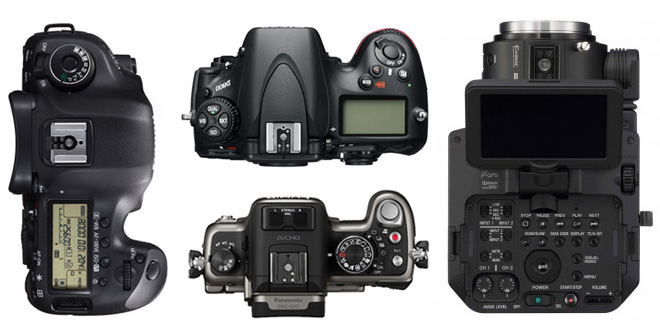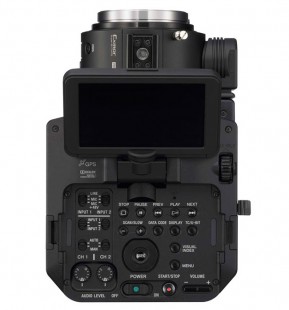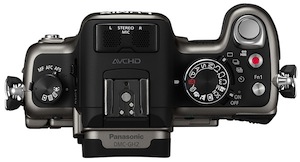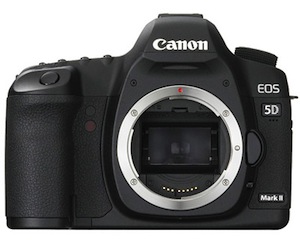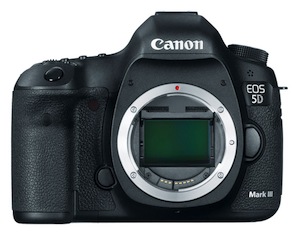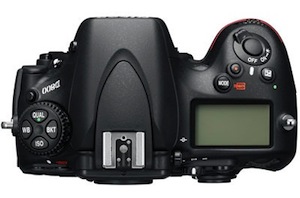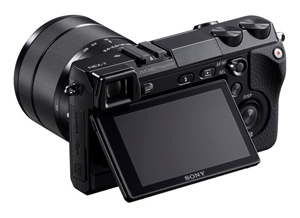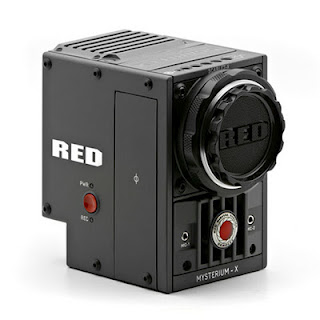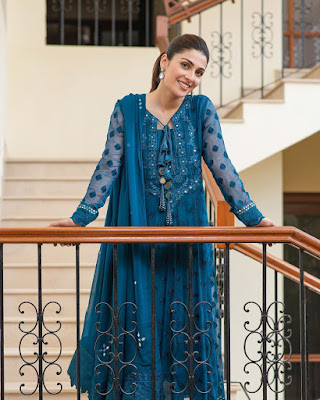Friday, 23 March, 2012 15:14
Check Our France Blogspot Link
WWW.GETbyU.blogspot.fr
Disclaimer: I usually say don’t wait – shoot with what you can get now, the best you can afford. But March 2012 is an unusual month because NAB 2012 is around the corner in April. The picture may change somewhat. Bear that in mind!
The candidates are:
Sony NEX FS100$4000 used / $4700 new
The first professional interchangeable lens camera to dip to the accessible $4000 mark
The first professional interchangeable lens camera to dip to the accessible $4000 mark
Canon 5D Mark III$3000 used / $3500 new
An incremental improvement to the 5D Mark II
An incremental improvement to the 5D Mark II
Canon 5D Mark II$1600 used / $2000 new
For budget users for whom a 5D Mark III is out of reach
For budget users for whom a 5D Mark III is out of reach
Panasonic GH2$600 used / $800 new
For the price of a lens you can shoot at 170Mbit i-frame with FS100 standard 1080p
For the price of a lens you can shoot at 170Mbit i-frame with FS100 standard 1080p
Nikon D800$3000 new
Improved Nikon full frame video DSLR offering with 4:2:2 HDMI output and 1.6x crop mode
Improved Nikon full frame video DSLR offering with 4:2:2 HDMI output and 1.6x crop mode
Sony NEX 7$1500 new
Top of the range mirrorless camera with 1080/60p
Top of the range mirrorless camera with 1080/60p
And at the end, a brief look at some of the higher priced options such as the RED Scarlet, Canon C300 and Nikon D4.
Wow what an embarrassment of riches for a start! I remember just 5 years ago the cost of going from a not-very-cinematic small chip camcorder to a slightly less not-very-cinematic pro camcorder was more than the price of the 5D Mark II alone.
Now you can go from the not-very-cinematic to cinematic for the price of a living room TV, with cameras like the GH2.
We’ve never had it so good.
The case for the Sony FS100
This is now down to $4000 used and so is a lot of camera for the money. If you are considering the 5D Mark III but think the resolution, manual focus, monitoring and handling may be an issue then the FS100 may be worth extra the $500 or so. It has the same lens mount as the little consumer NEX cameras and can take Canon lenses with full aperture and IS control via the new Metabones adapter, the issues with which are now solved. Unlike, say, a $10,000 Scarlet, the FS100 is ready to shoot out of the box. It is modular though so you will be tempted to buy specific add-ons for it… But they’re not essential like they are for the RED. It takes an SSD or SD, and the high capacity battery runs for up to 8 hours. It does 1080/60p even via uncompressed HDMI 4:2:2. Currently the Atomos Ninja does not support that, only 1080i with 24p in progressive segmented frame format, but it will be nice for the future. If you need slow mo, better resolution and peaking with an articulated screen the FS100 is a better choice than a full frame DSLR for not that much more money. A forthcoming firmware update will make this camera multi-region like a Canon DSLR is. For some reason the price is a bit crazy in Europe so consider importing a NTSC model instead.
The case for the Panasonic GH2
If you think the FS100 is a lot of camera for the money wait until you see what this does for $600. Resolution is insane and the best of all the DSLR-type video modes. With the hack which runs very reliably you get up to 170Mbit ALL-I from it and a very fine grain of noise. Image quality is comparable to the FS100 in all but the shadows. The codec compresses the lows more and it has a more punchy baked in look. The camera doesn’t have the low light performance above ISO 3200 that the 5D Mark III and FS100 does but you can get very nice film-like black and white images from it at ISOs up to 12,800 in extreme low light situations with fast glass. Nice artistically. The camera lacks the audio control and XLR jacks of the FS100, and the sensor is slightly smaller than Super 35mm. It does not have quite the colour sampling performance of the 5D Mark III, Mark II and Nikon D800 via HDMI 4:2:2 because the image processing pipeline prioritises resolution sampling but there’s no question that this is easily the best bang for buck camera in the world right now and capable of a superb image, sometimes RED 2K rivalling in the way it looks with the right lenses. Just be aware that shallow DOF is rather small-chip looking at super wide angle, though it is lovely and shallow at mid to tele even stopped down.
The case for the Canon 5D Mark II
An oldie but goodie, the Mark II has the largest sensor here because it is primarily a 35mm photographic animal. The problem is that the 4 year old image processor and sensor is not optimised to deliver video. Resolution falls quite a long way short of the GH2 and FS100. The codec is ok but nothing special, and you don’t get the fine grain of noise you do on the FS100 and GH2 either. The image is really nasty at ISO 3200 and above with blotchy red and blue speckles everywhere. However there is no denying that full frame x-factor. The colours, the way it handles shadows and highlights (it even has more headroom in specular highlights than the much newer 5D Mark III in video mode) and the creamy shallow depth of field even when stopped down. With this camera it is all about the lenses. Forget about the rest. Although with the superb Magic Lantern hack you can win a LOT of useful video related features back (such as manual audio control, levels, peaking and adjustable frame rates) most of which the 5D Mark III doesn’t have and might never have! Moire and aliasing is an issue to watch out for as is HDMI monitoring at 540p and via the small non-articulated LCD which can be back breaking at times – but with the used price now finally dropping since being made obsolete the old 5D could be a bargain if you want the full frame look in your videos. A great b-cam to the better all-rounder GH2 for those on a budget.
The case for the new Canon 5D Mark III
Rather than progression, this camera is more like a fix. It does away with moire and aliasing, it has a headphone jack for audio, and better monitoring over HDMI. It reminds me in some ways of the difference between, say, a 60D and 7D. BUT it still has the muddy resolution of the 5D Mark II from 4 years ago! For certain shots the softness is just perfect. Portraits, medium-close ups, shallow DOF stuff is all very nice on this camera. At infinity focus on a wide angle shot though, it looks utterly terrible. The codec is questionable on this one, it doesn’t seem to give you much of an image quality boost and it has some fizz where the old 5D Mark II has none, but it is nice to have intra-frame to give quick motion a cleaner more cinematic look. Whether the 5D Mark III is worthy of your $3000 or whether you should spend half that on the body and invest the rest in lenses will depend on you. If you already have a lot of full frame glass and want to make use of your nice fast wide angle 24s and 28s then this is the one to go for provided you can put up with the stuff missing over the FS100, like 1080/60p, over crank, clean HDMI, 4:2:2, XLR audio, articulated screen, peaking for manual focus, better battery, (deep breath, 1 sec!!……….) mirrorless mount, AF with Sony lenses and recording to an SSD. Quite a lot more for $500 extra! But bear in mind that full frame is still quite a bit larger than Super 35mm in terms of the sensor so you get a different look to your lenses on the FS100.
Resolution actually seems a notch above the 5D Mark III judging from some footage I’ve seen lately. But the camera has issues on horizontal lines, some aliasing and quite heavy moire like the old 5D Mark II. This is not improved via the HDMI output but you do get 4:2:2 and can record to ProRes at 300Mbit. Just as well since the internal encoder is not very good. However the DXOMark results for the 36MP sensor are VERY – no EXTRAORDINARILY good. They say it is the best they’ve ever tested, better than medium format digital backs. Surprisingly the ISO score is neck and neck with the D4 despite the much higher megapixel count. How this translates to video mode remains to be seen. This camera is also a slightly more reasonably priced camera than the new Canon equivalent but more than a used 5D Mark II. It has some things the 5D Mark III doesn’t such as a 1.6x crop mode but it lacks some of the Canon features like timecode and internal i-frame codec. Image quality is similar on the whole and you get the same kind of manual audio control and monitoring. If you have a EVF just be aware that you’ll be relying on a 24Mbit internal codec that isn’t much good. You might want to swap it to a Ninja for both monitoring and recording with this camera.
Earn Money: ? Click Here
Some of the FS100′s best features have tricked down to the NEX 7 but the image quality just isn’t as good. The GH2 is better resolved as well. What the camera does have going for it is price, size, lens mount, slow mo (although it is not compressed as well as on the FS100) and peaking for manual focus. It also has a nifty articulated screen making it more convenient to use out of the box than a 5D Mark III or D800 for video on a tripod. Moire and aliasing is there and there’s no way to record at high bitrates like there is on the other cameras. The camera has a flat picture profile but it falls apart horribly in post so this is not the one to get if you want to do colour correction or shoot flat. Personally I end up using my GH2 ahead of the NEX 7 because I prefer the image, though both are brilliant in terms of what they offer for the money. ReWo have developed a very nice cage for the NEX 7 like they did for the GH2, you can check that out here.
The case for the others
RED, C300, Nikon D4 – now it gets serious. These are a lot of money and shouldn’t be considered unless what they’re offering for the extra is worth it in terms of investment. These are not purely artist’s tools they are business tools. Here is an example of what I mean – the FS100 lacks a built in ND filter. Would this slow you down or hurt productivity shooting a commercial job? If the answer is yes then it is worth investing a not inconsiderable amount of money in solving the problem.
The Canon C300 solves a lot of problems and is simply brilliant to use. However the image is not that much different to the FS100 (8bit 4:2:2) and it lacks some features of that camera – such as over crank, 1080/60p, SSD recording and auto-focus. It does however have two biggies… Built in ND wheel and HD-SDI. If those are a concern – and you will know without explanation if they are – then that will be $11,000 for your ND wheel and HD-SDI socket thank you very much, ta. Oh and it also has a ‘broadcast ready’ codec which is helpful if you are shooting for the dinosaurs at the BBC! It is MPEG 50Mbit 4:2:2 and 8bit – not up to the Sony F3 standard of 10bit – but this is more than compensated for by the sensor which has the best colour sampling on any camera today.
The RED Scarlet is $10,000 and does 4K. If that isn’t exciting I don’t know what is! However it comes with a plethora of issues which need carefully considering. Remember also that 2K on this camera is in crop mode. 4K is full sensor and that mode doesn’t do slow-mo like the EPIC.
It won’t shoot for $10,000. You are really looking at closer to the C300′s price. Here is the breakdown of Scarlet’s pricing:
Scarlet-X brain with Canon mount and SSD slot – $10,000
…
Side handle (mandatory) – $1000
LCD (mandatory) – $1600
Battery (erm, mandatory) – $400
REDMAG (that is the SSD, 64GB) with station $1100
…
Side handle (mandatory) – $1000
LCD (mandatory) – $1600
Battery (erm, mandatory) – $400
REDMAG (that is the SSD, 64GB) with station $1100
Then there’s the stuff you really need but can just about get away with not having. The RED ROCKET speeds up post – that is $5000. The extra SSDs are $1000 a piece for just 64GB, far more than they would be direct from a manufacturer like Kingston whose drives are the latest tech and go for just $1 per GB. Yes – $64! So add up the mandatory stuff first and that comes to $14,100. Still under the Canon C300 but with raw workflow and 4K. For absolute image quality that is really very good value. You have to really want that 1080p broadcast ready codec and quicker workflow to stump up extra for the Canon C300.
And finally the Nikon D4.
Forget it. The D800 has a better image in video mode and that is half the price! It does however have a 2.7x 1:1 crop mode that gives you a sensor size the same as a $300 Nikon J1 mirrorless compact camera. Don’t laugh – image quality is actually perfect 1080p in that mode with no aliasing or moire. But is it worth $6000? As a stills camera for pros that do the occasional video, yes. But for filmmakers, certainly not.
Source: EOSHD.com
Earn Money: ? Click Here
http://adfoc.us/
